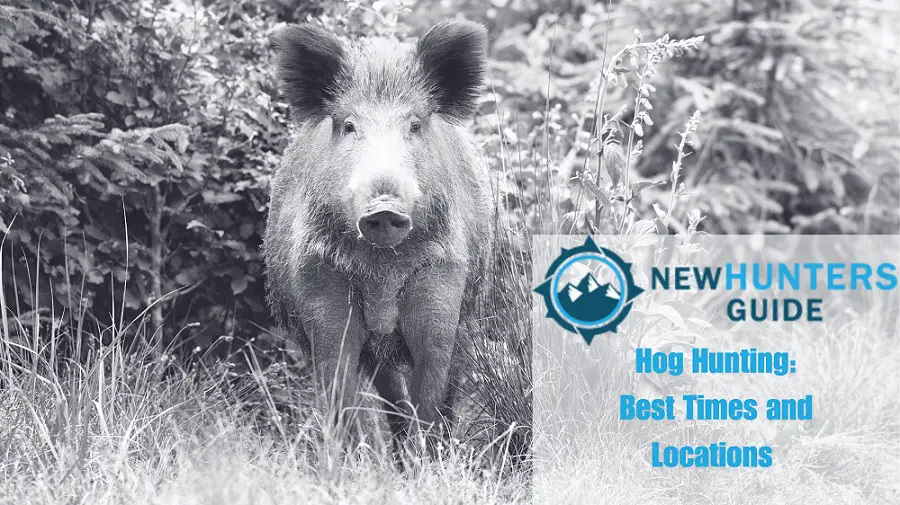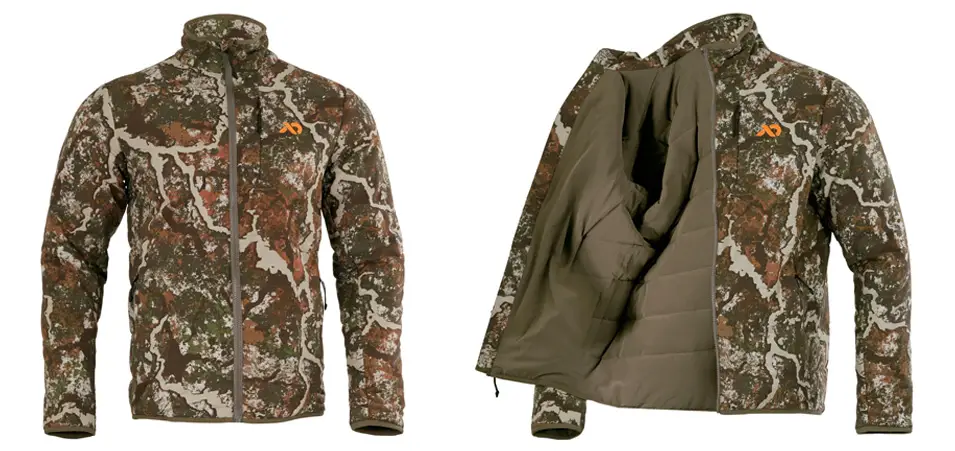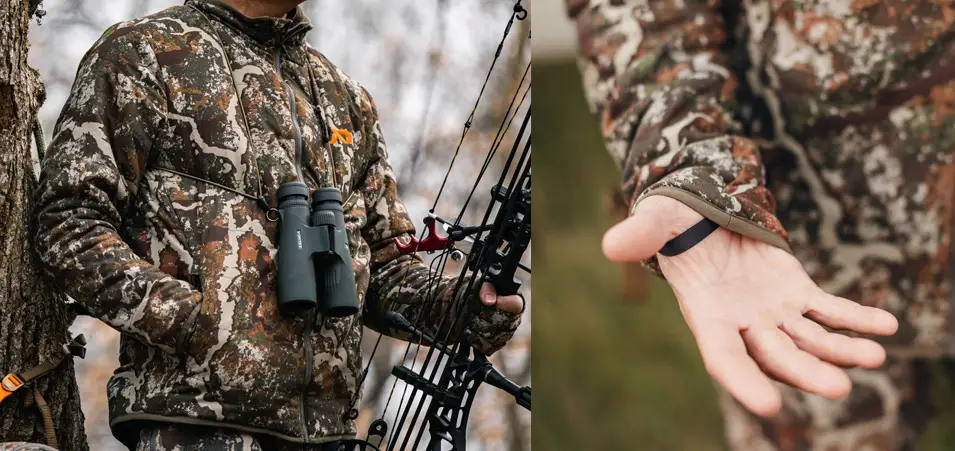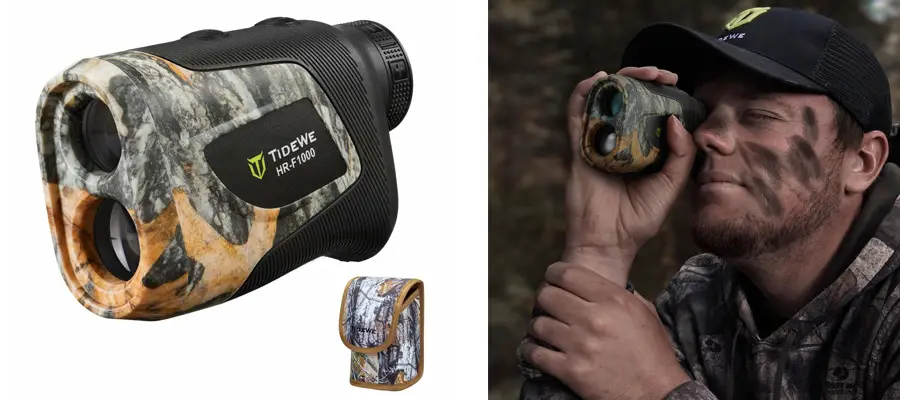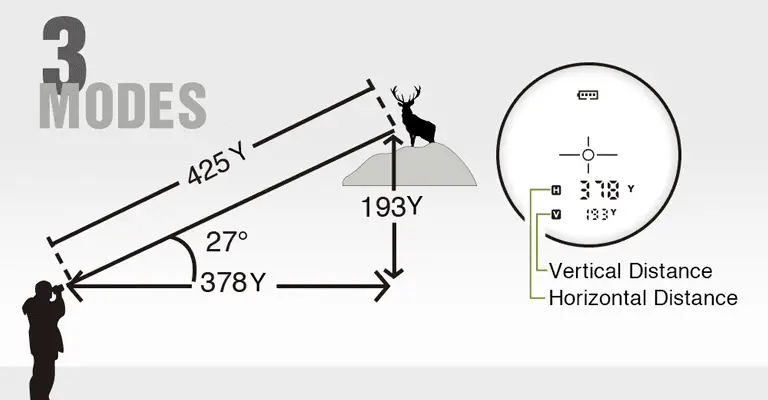This article was sponsored by Spartan Boar Hunting.
Across most of the Southern United States, feral hog hunting is a staple feature of year-round hunting. This need for year-round hunting stems from the fact that many places where feral hogs roam are overwhelmed by these extremely destructive, invasive animals. As such, hunting feral hogs has become something of a pastime and makes for great targets for novice hunters.
With the population numbers of feral hogs being so large, many places have feral hogs in open season where legal hunting can take place year-round with a huge variety of approved weaponry. Regardless of your hunting experience level, if you have any experience at all, feral hog hunting is sure to be a blast for novices and experts alike. Read on with us today as we explore the biology of feral hogs as well as the best times and places for beginners to hunt hogs.
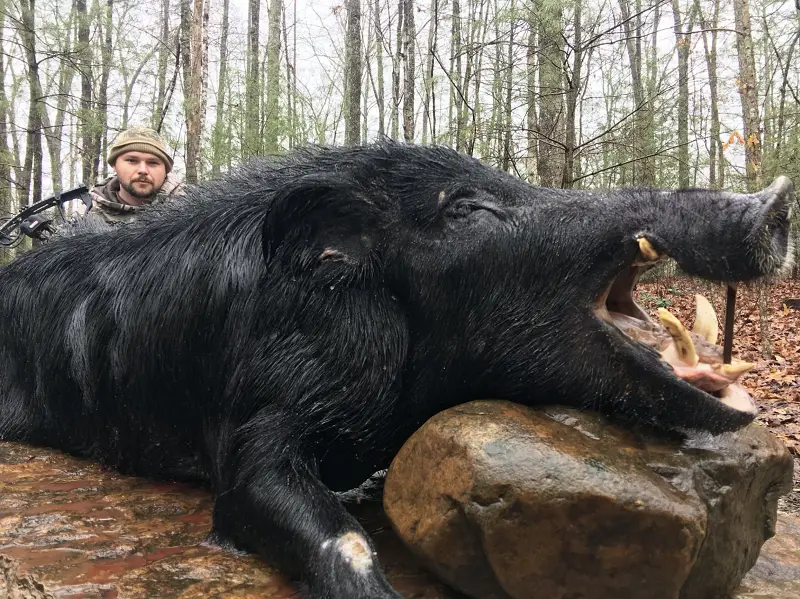
Understanding Hog Behavior
The start of any good hunt begins with understanding the animal being hunted. We will quickly explore what hogs want, which will indicate how to find them and their tendencies. This info will get even the most novice hunters in positions to hunt their own hog.
Basic Biology of Hogs
At their core, feral hogs are quite intelligent and extremely adaptable animals. This flexibility allows hogs to thrive in a variety of temperatures at various elevations with a multitude of vegetation types. As opportunistic omnivores, a hog’s diet largely consists of any edible plant nearby. Along with plants, so long as they have access to water, hogs can thrive almost anywhere.
Feral hogs are known for rooting, where they dig through dirt with their snout to access roots and bulbs below. This is where a lot of damage can stem from; the rooting and overturned soil can have a devastating impact on the environment while the hogs eat well. Farmers and natural forests alike can be absolutely devastated by a pack of feral hogs looking to feast. This occurs especially at night when the hogs congregate in “sounders”, the name of a large hog group. Once together, under the cover of night, local vegetation is at the mercy of the pack and may will not make it through.
Seasonal Behavior of Hogs
Hog behavior will differ slightly throughout the changing seasons. The key principle for survival is having access to water to thermoregulate and plants for food. As such, these animals can survive even through cold winters. In the hotter months of summer, expect to find hogs laying low during the day and foraging in the cooler nights. Hogs will tend to stay near bodies of water as they aren’t great at thermoregulating themselves.
During the winter, with food being harder to find, hogs will travel further distances in search of sustenance. This desperation for food leads to more success with trapping these animals as they are more willing to go for the bait.
Feral hogs don’t have a distinct breeding season. Like humans, they are capable of breeding year-round. However, biologists find that hog births tend to peak in spring and fall. Mother hogs are also known for being extremely protective of their piglets. They will respond to threats, so hunt carefully if you see piglets around. Their proliferation as breeders is why many hog populations are reaching levels that are out of control.
Best Times to Hunt Hogs
Time of Day
For most of the year, hog activity peaks in the early morning and late evening. These animals can run amuck at night, meaning that nocturnal hog hunting is extremely popular where permitted. Especially when temperatures get hot, hogs will avoid the heat of the day with a midday rest and do their foraging in lower light conditions. This can change when things get cold during the winter. In these winter months, hogs are more likely to be active during the day to take advantage of the heat and scrounge for any available food.
Best Months for Hog Hunting
As mentioned, many states offer year-round hunting of feral hogs. However, the seasons and weather can affect hog behavior, so there is an optimal time to hunt for the best results.
In many states, the winter months are the peak months for feral hog hunting. During the cold weather of December through February, hogs are forced to move around during the day to absorb heat and find food in the bare landscape. This extra movement, especially during sunlight hours, increases the hunting success rates.
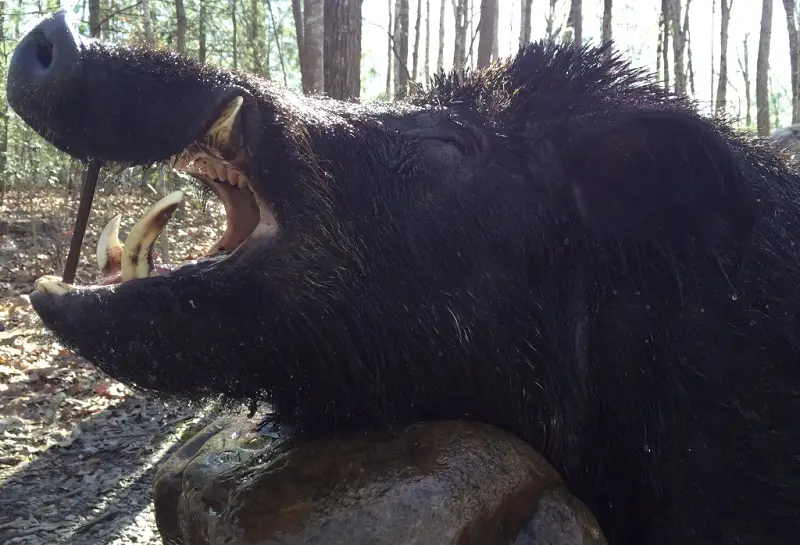
With so many hogs roaming the landscape, the other seasons can still make for great hog-hunting experiences. As days get hot, especially during the summer hunting, the best hog encounter will occur at night when they are most active. Keep an eye on temperatures to see how hog monthly activity shifts.
Ideal Locations for Hog Hunting
Depending on your state and local hog population, there are slightly different regulations around where you can legally hunt for hogs. Hogs being extremely adaptable will be found most places, so oftentimes it’s just regulations that restrict where you can hunt, not when or how many.
Public Land
Many states allow for feral hog hunting on public land year-round. The list of states includes:
California, Colorado, Idaho, Iowa, Kentucky, Louisiana, Massachusetts, New Mexico, North Carolina, Ohio, Oklahoma, Oregon, Pennsylvania, Texas, Virginia, and Wisconsin.
Check with your specific state for more details on regulations that will apply to you. These states also offer private land opportunities.
Hunting on public land has its advantages, but also some drawbacks. First, public land is cheap and available, making hunting opportunities more accessible to individuals, especially beginners. This works in both directions, however, as public lands will have more hunting pressure that can result in smaller, more cautious animal populations and an increased likelihood of running into other hunters. At the same time, public lands are often well mapped, easy to find, and provide local tips that allow novice hunters to get into the hog hunting game more easily.
Private Land
Some states only allow for private land hunting, though these states still offer year-round opportunities. Again, check for specific local regulations in your state and county, but in general, states that allow private land-only hunting include:
Alabama, Arkansas, Florida, Georgia, Indiana, Mississippi, New Hampshire, South Carolina, and Tennessee.
Hunting on private land revolves around relationships with landowners or finding a hunting outfit and private guided hunts. These opportunities can be extremely unique and exciting as the hunting on these lands can be extremely controlled and almost manicured for you. Hunting clubs in lodges provide a full hunting experience from expert guiding to room and board. A large majority of Tennesse hog hunts take place on private land with outfitters and guides.
The downside to private land hunting is that usually more planning and money are required to see these hunts through. Whether you’re paying a landowner for permission/a hunting lease or getting access to private property through hiring a guide at a lodge, you’ll pay more for what can be a fantastic experience.
Regional Hotspots
Some states are more known for their hog hunting than others. Especially if you’re a beginner, trying your luck in one of these areas can increase your chances of success due to higher hog population density.
Some estimates have Texas accounting for almost half of the feral hogs in America. With hunting available year-round on public and private lands, Texas makes for a fantastic destination for hog hunting. Florida and California also have extremely high hog population densities providing more locations for a great hog hunt. From coast to coast, you can find hog hotspots; feral hogs are an extremely accessible hunt. Check with local regulations prior to your hunt and don’t be afraid to hire a local guide for more in-depth knowledge on hunting in certain areas.
Tips and Gear for Beginner Hog Hunters
To have a successful, safe, and legal hunt, be sure to have the proper equipment and permissions prior to setting out. This list of essential gear includes:
- Proper hunting license and landowner’s permission (if on private land)
- Proper attire for camouflage and coordinated with expected weather conditions
- Maps, Compass, GPS, and Radios for communication and navigation
- Proper weaponry, ammunition, flashlights, and night vision goggles (if a night hunt)
- Baits, calls, and safety equipment – hogs can be dangerous especially when injured
- Appropriate dressings – can you efficiently get the hog out after the hunt?
Hunting for hogs is a literal different from other types of game, as you can really use almost any weapon of your choice. Whether it be a rifle and a pistol or an automatic shotgun and a spear, it’s really up to the hunter.
Tips for Successful Hog Hunting
For beginners looking to have successful hog hunts, your best bet will be to start in an area with a high hog population density. In these hotspots, there will be telltale signs of hog activity including tracks, uprooted soil from rooting, and cavities near ponds and creeks where hogs “wallow” in mud to cool themselves. Following these signs to track hogs and find them in their destruction.
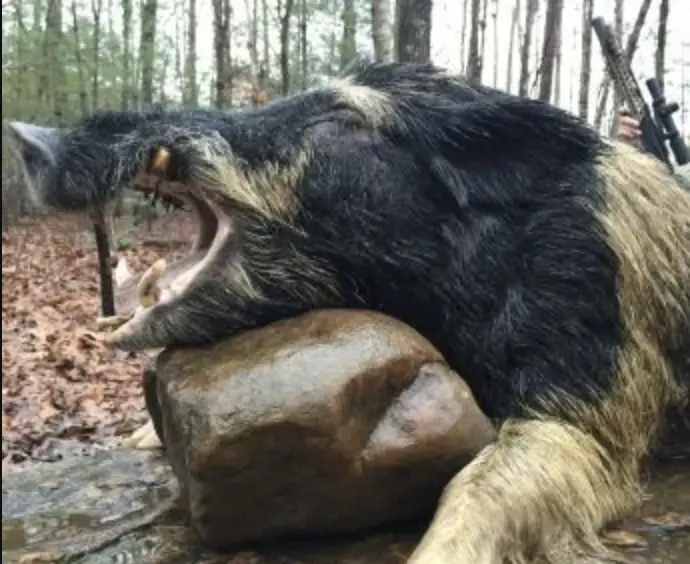
Understand when the hogs are most active. For most of the year, this is during the night hours. Use calls and bait to lure hogs into prime shooting locations where you can land the kill shot. Consult local maps and guides to get insider information on where to find hogs and the best way to get them in the open. As with all hunting, always be cautious with noise control and scent drifting to avoid spooking the hogs prematurely.
Feral hogs are dangerous animals, especially when wounded or around their offspring. Always be properly equipped and prepared to defend yourself when on a hog hunt, regardless of where you are.
Legal Considerations and Safety
Hunting Regulations
Always be sure to check with your state, county, and town regulations where you are hunting to make sure you are legally taking on the hunt. This will certainly include a hunting license as well as bag limits, reporting requirements, and regulations on allowed weaponry. If hunting on private land, make sure you have all the proper documentation from the landowner. Whether you’re a beginner or an expert, understanding the legalities of your specific hunt is crucial.
Safety Precautions
With any hunt, firearm safety is absolutely essential. Proper usage of a gun’s safety mechanism while practicing other safe firearm practices is a must. Firearm safety includes marking your body with bright orange to distinguish yourself to other hunters in the woods. On hog hunts especially, be prepared to protect yourself from a charging hog. These animals are dangerous, especially when wounded.
Plan your trips with maps and directions. Bring communication devices and GPS. Getting lost in the woods on a hunt is a dangerous aspect to taking on the challenge, but proper planning and precaution greatly reduce this risk. Having first aid equipment and knowledge to properly use it can save lives in the field; this knowledge is extremely important to have on hand. Always air on the side of caution when out in the field, hunting can be a dangerous proposition, especially if done incorrectly.
Conclusion
Hog hunting is widely accessible across the United States and provides a service to reduce the often out-of-control feral hog populations. Check with your state and county to understand where and when you can engage in a hog hunt. In general, the winter months make for the best hog hunting as they are out more during the day and they cover larger ranges in search of food. During the summer, hogs wait until nighttime to forage, meaning that you’ll have to come out at night to have the most success.
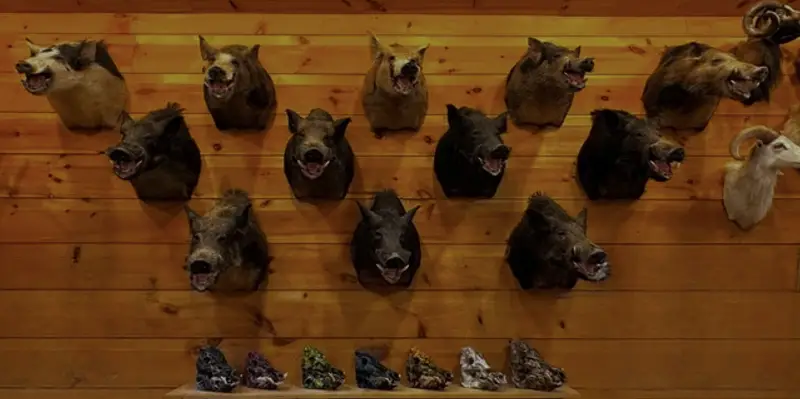
As always, safety is the key to a successful hunt. Practice proper gun safety and be ready to defend yourself against a charging hog. What’s more, be sure you can safely get in and out of your hunting area so that you can get home at the end of the trip. Finally, enjoy the trip! Enjoy the wilderness, the nature, and if you manage to get a hog, enjoy the table worthy meal they provide.
This article and its images were written and provided by the great folks at Spartan Boar Hunting. Check them out today if you are interested in booking a hog hunt of your own!

